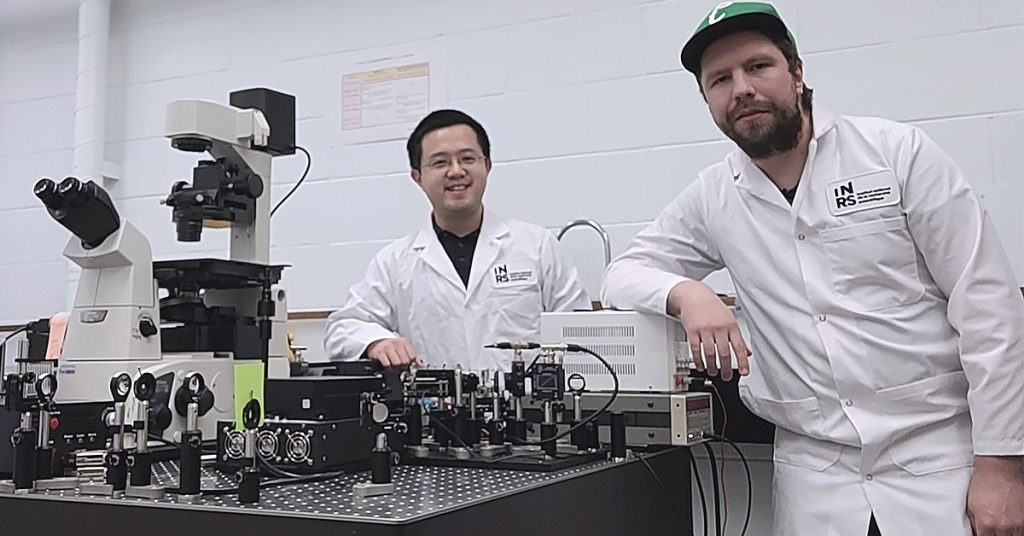At the Énergie Matériaux Télécommunications Research Centre of the Institut national de la recherche scientifique (INRS)’s laboratory, Professor Jinyang Liang and his collaborators are making an attempt to develop a new ultrahigh-speed single-pixel camera.

Professor Jinyang Liang and doctoral student Patrick Kilcullen in their laboratory at the Énergie Matériaux Télécommunications Research Centre of the INRS. Image Credit: Institut national de la recherche scientifique.
This newly-developed device, called single-pixel imaging expedited through swept aggregate patterns (SPI-ASAP), has the potential to stream video at 12,000 frames per second with the help of light modulation, thereby providing it with outstanding flexibility.
Having been reported in the journal Nature Communications, this work represents an important discovery in ultra-high-speed single-pixel imaging.
This new camera is an innovative prototype with potential benefits for the photonics industry in Quebec and the rest of Canada.
Jinyang Liang, Study Corresponding Author and Researcher, Ultrafast Imaging and Biophotonics, Institut national de la recherche scientifique
A Powerful Technology
For many years, Professor Jinyang Liang has concentrated his research on laser modulation methods in new optical imaging devices. Single-pixel imaging (SPI) has evolved as a strong method with the help of light modulation and a single-point detector rather than a two-dimensional sensor.
But the majority of SPI systems are restricted by the use of digital micromirror devices (DMDs). This means that the speed at which the single-pixel camera could record images is just a few tens of hertz.
The other techniques make use of fast-moving physical encoding masks for light modulation. Although rapid, such masks also fix the resolution, thereby making such systems rigid in the face of variable experimental parameters.
In contrast to such methods, the new camera developed by researchers at INRS integrates a digital micromirror device with laser scanning for quick and reconfigurable pattern projection.
This enables the system to function at various spatial resolutions, as well as at different imaging modes and speeds. Consequently, it has the potential to stream real-time video at 100 frames per second (fps) and ranges up to 12,000 fps offline.
The ability to image in real-time at 100 fps surpasses existing technologies and sheds light on many industrial applications where on-site analysis and online feedback are needed.
Patrick Kilcullen, Study First Author and Doctoral Student, Institut national de la recherche scientifique
Broad Applications
One more feature is that the system seems to be highly generic and could be adapted easily to several configurations.
In a scientific manner, the device could have wide applications, particularly in the non-visible spectrum, as there is no ideal camera. Very high-speed imaging enables the capture of transient events, like the detection of hazardous gases, the analysis of combustion phenomena, and also the characterization of semiconductor materials.
The research group with Ph.D. student Patrick Kilcullen and professors Tsuneyuki Ozaki and Jinyang Liang has patented the method and is at present seeking collaborations to commercialize it.
This study was made possible by obtaining financial support from Natural Sciences and Engineering Research Council of Canada (NSERC), Canada Foundation for Innovation, and ministère de l’Économie et de l’Innovation du Québec, Canadian Cancer Society, New Frontier in Research Fund, Fonds de Recherche du Québec–Nature et Technologies, and Fonds de Recherche du Québec–Santé.
Journal Reference:
Kilcullen, P., et al. (2022) Compressed ultrahigh-speed single-pixel imaging by swept aggregate patterns. Nature Communications. doi.org/10.1038/s41467-022-35585-8.